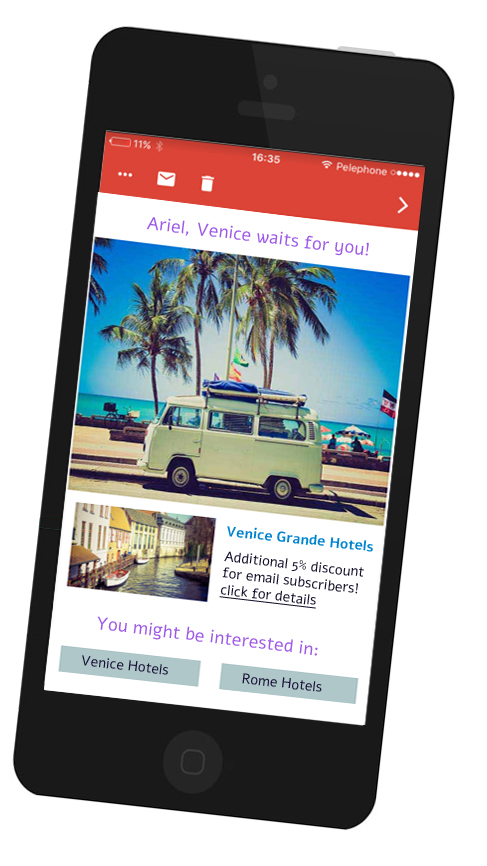API
Application Programming Interface
API (Application Program Interface) is a way to achieve platform functionalities through code, without accessing the platform itself.
Some of our users prefer API as intermediary tool to control email delivery functions, instead of coding within our platform.
API enables you to complete actions without leaving your website. It enables your website to “talk to” the email delivery platform, commanding it to activate triggers, update data in several places, and more.
API & eCommerce
Let’s take as an example a popular API tactic used by eCommerce websites: Cart Abandonment.
70% of eCommerce website visitors will abandon products in a cart! (click here for the data).
A most effective way to get the visitor to come back and finalize the purchase, is by sending them a newsletter. The most important thing is to personalize this newsletter; use the data you have about the visitor’s journey.
For example: if a woman just added a dress to the cart, but have not made the purchase, it’s worthy sending her an email with an image of that same dress, along with an incentive to buy it - like a 5 percent off coupon.
You can find more such ideas on this Shopify blog post.
See how a Tourism business can use this tactic, too:

Technically - how do you connect between the products a person abandoned, and the newsletter that is sent to that person?
This is what API is for, together with other platform capabilities that enable unique personalization.
This is just one example for many API use cases. eCommerce websites use API regularly to personalize newsletters, since these tactics significantly increase sales.
To learn more about this subject:
- 15 Surprising statistics about email marketing (@Adobe)
- 6 ways to seal the deal & Re-engage cart abandoners through emails (@InboxArmy)
- Abandoned Cart On Shopify: 3 Examples Of Winning It Back (eCommerce email marketing blog)
Power Users: consider “search abandonment” and not just cart abandonment (you can also call it “shopping abandonment”). What would you include in an email for someone who has just been looking for something on your website, and then left? Perhaps a piece of awesome content ? A coupon?
API for Newsletter Delivery Platform
Our API works according to the following categories:
- Reports:
retrieving campaign data (opens, clicks, purchases, mobile…), unsubscribing report, fail report - Verification:
Secure identification of client-developer - Campaigns:
creating a standard campaign, or automated, triggered, campaign data retrieval, campaign activation - Templates:
the campaign’s constant information (“view in browser”, sender address, etc) - Forms:
retrieving existing forms, creating new forms, updating form features - Subscribers:
importing subscribers to platform, managing user authorizations, retrieving a single subscriber’s data by email address, removal from list, canceling campaign for specific subscribers - Lists of Subscribers:
Retrieving lists of subscribers, retrieving a list by name or by ID, create and update a list
For full documentation: Publicators ASP.NET Web API Help Page (Json format)
Popular Use Cases
Removing from Lists / Moving to Another List
Example: a new website visitor engages with your product pages. You begin sending them a series of newsletters. With time, that person makes a purchase. This changes his status on your system - from Lead to Customer. You can use API to remove them from the Leads list, and move into the Customers List, promptly after they made that purchase.
Managing Unsubscribes
The Spam laws require the newsletter senders to get each person on the list to approve receiving their emails. For this reason it’s crucial to meticulously manage unsubscribes. To do that, the platform automatically adds a link to unsubscribe at the bottom of every email. Still, there are people who choose to hit “reply” and ask to be unsubscribe, and not by clicking that link. In addition, some marketers use several email accounts (for easier campaign management), so sometimes you need to unsubscribe someone from several different accounts. API helps achieve that, and much more.
Send by Segment
Just as you are able to send newsletter a to list of subscribers, you can also send newsletter to a segment. “What’s the difference?” You might ask. Well, whereas list of subscribers contains accumulative records, segment is basically a real time screenshot of all subscribers from all lists, filtered by set of criterias. API integration enables you to create this kind of segment based group from within your website and then send the real time data to Publicators for the sending.



